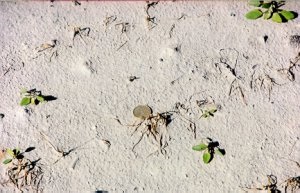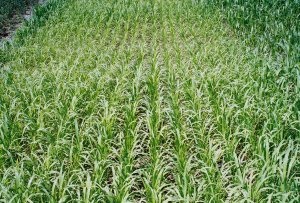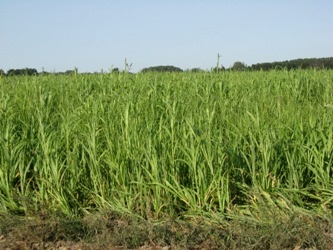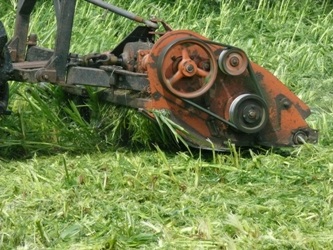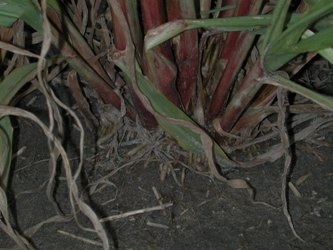Cover crops: pearl millet
Information on the benefits and growth habits of pearl millet planted as a cover crop.
Description
Family
- Annual grass.
- Pennisteum typhoides.
Cover crop use
- After early harvested crop.
- As a nematode suppressant.
Growth habits
Germination
- Warm season grass; 65° to 70°F (18° to 21°C) is needed for rapid germination.
Top Growth
- Solid stems, often densely hairy.
- Several tillers per plant, only 1 seed stalk.
- Drought resistant.
Root System
- Fibrous.
Overwintering
- Winterkills.
Site Suitability
- Tolerant of most soil types, but well suited to sandy soils.
- Tolerates infertile soils better than most other crops.
Control options
- Tillage, frost, mowing and burndown herbicides can be used for control.
Weed control
- There are no herbicides registered for weed control in pearl millet. Use narrow rows and appropriate agronomic practices to establish a vigorous crop canopy as soon as possible.
- If grass weeds are heavy use a preplant burndown of glyphosate; broadleaf weeds can be controlled with Peakplus, Banvel or Basagran.
Benefits and cautions
Nutrient management
- Fertilizer requirements are similar to other forage grasses, lower than corn (roughly 70% of forage corn fertilizer).
Pest management
- Research shows that a pearl millet cover crop (using CFPM101 developed at the Delhi AAFC Research Station) is an effective way to reduce root lesion nematodes provided it is weed free.
Organic matter
- If left to grow without cutting, can reach 12 ft in height.
- If spring planted as a cover crop, should be mowed when 2.5 ft in height, mow no closer than 6–8 inches to the ground.
- Biomass return is highly dependent upon planting date and first frost.
Other millets
- There are a variety of other millets available, they are not commonly used as cover crops but may be used in annual forage mixtures.
Getting started
Establishment
- Drill after danger of frost is past.
- Soil temperatures should be above 12°C.
- Plant ½ inch deep at a rate of 4 kg/ac.
- Plant into a firm, well prepared seedbed.
Cost and availability
- Seed can be expensive.
Updated: January 15, 2025
Published: August 24, 2022
